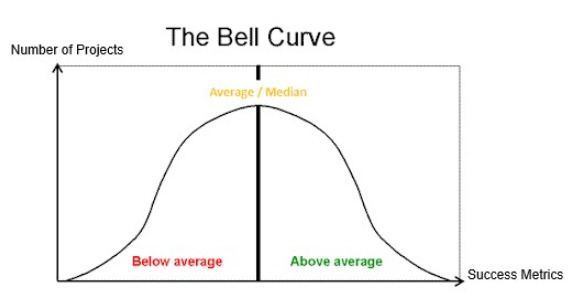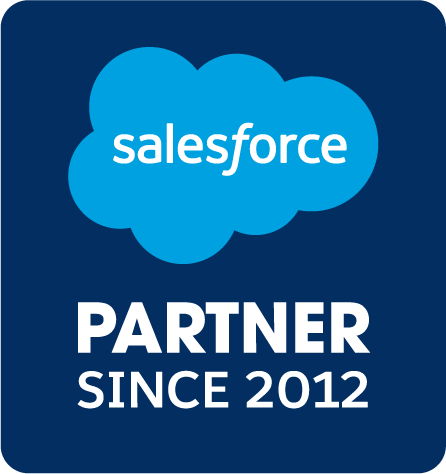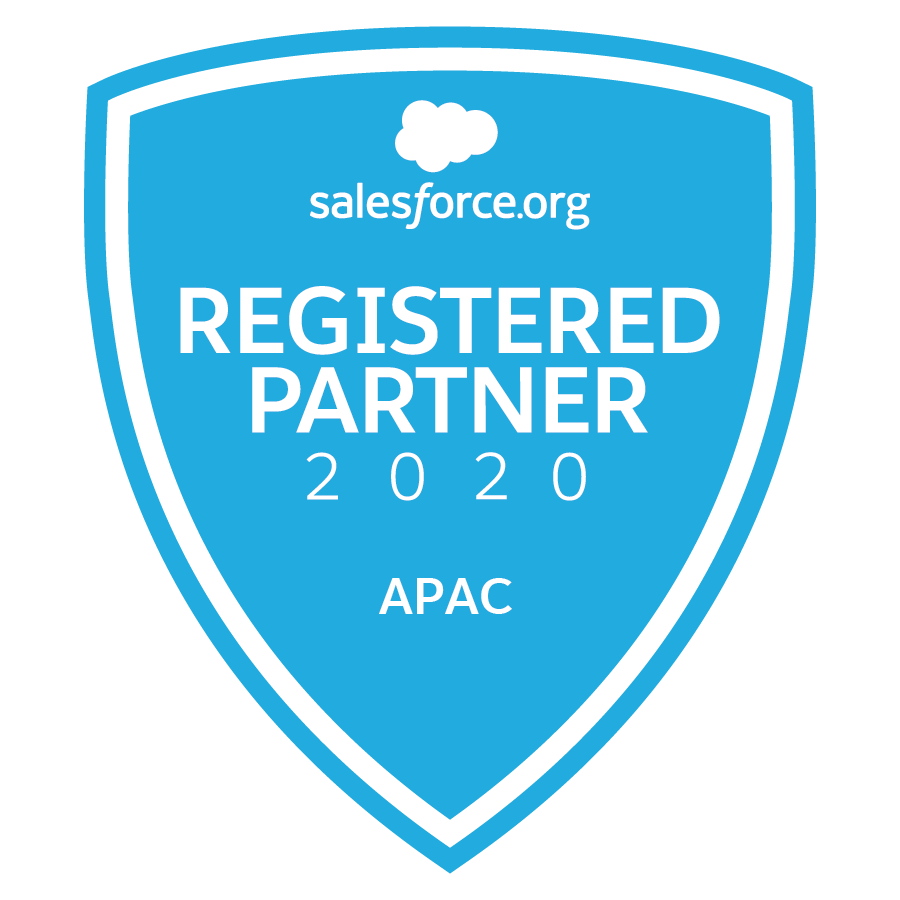Having a group plan and a flexible thinking approach are important aspects of any successful project according to our National Sales Manager.
Why projects fail
I recently read one of those articles about why technology projects fail. There’s loads out there, all with slightly different messages. I’ve yet to read one that addresses what I think are two key areas: what we mean by failure, and the role of people in technology projects, particularly around the ideas of a “group plan” and “flexible thinking”.
A definition of failure
Over the last 10+ years, I’ve worked on hundreds of Salesforce projects of different sizes. Some have gone well, some haven’t. Most though have landed somewhere in the middle. Technology projects, like most things in life, do not follow a binary model. Rather they follow a bell curve distribution.

The above average projects are those that go the extra mile and deliver a substantive, sea-change to an organisation and those they work with or for. Typically, the technology piece is the enabler, the supporting act to a sea-change that’s being delivered more broadly within an organisation.
The average projects are the ones where you deliver a positive outcome (an increase in sales, a lower attrition rate in your regular givers, a higher NPS score from your customers). It’s not earth-shattering or mind-blowing; generally it’s just nice, comfortable, everyone’s happy, incremental change. And there’s nothing wrong with this. Often, the first phase of a project sits in this category as an organisation takes baby steps to reinvention. Incremental change tends to ensure higher user adoption. Sea-change can come later.
Below average projects can range from situations where part of the business is happy with what’s been delivered and the change it has brought, but other parts aren’t; to situations where no success metrics can be attributed to the technology change. These would sit right at the tail end of the bell curve, often attract high media attention (especially if government bodies are involved), and usually result in the ditching of what has been built for a new solution entirely, as if simply choosing a new platform will resolve whatever core issues are the root cause of the failure in the first place.
I’m glad to say I’ve not been involved in too many below average projects, but I have had a few. Anyone who denies having some failed project skeletons in their closet is just lying. We all have them. Denying their existence means you’ve not taken the time to learn from your mistakes.
I believe there are two key elements that dictate where a project sits on the bell curve of success: having a “group plan”, and being flexible in your thinking.
What we can learn from Social Theory – Group plans and flexible thinking
My daughter is autistic. In the short 9 years she’s lived on the planet, she’s done a lot of introspection and self-analysis to understand the world around her. What neurotypical people are supposed to pick up instinctively, she has had help to understand and learn. As a result, the rest of her family have also spent more time than we might usually have done thinking about how we behave and how we understand and perceive the world around us.
And that’s a good thing. We see it as one of the many positives of having someone with autism as part of our family (another would be our daughter’s fairness super power, but that’s another blog!).
Two things our daughter has learnt about that I think have a massive impact on the success of a technology project, are group plans and flexible thinking.
For my daughter, the concepts of group plans and flexible thinking have helped her understand that if she wants to get along with her peers, she needs to be able to negotiate and agree on a common outcome. She needs to be able to understand people’s expectations of her, and how to communicate her expectations to others. And, most importantly, she needs to know when to stand her ground and when to be flexible for the good of those around her.
How to avoid common mistakes
Almost every project I’ve been on that has been below average on the bell curve of success, has had issues because of a lack of a group plan combined with some resolutely steadfast individuals who have refused to be flexible in their thinking.
Defining a group plan has to start during the sales cycle. Getting alignment around outcomes, and setting expectations about how you’re collectively going to get to those outcomes at the start of any relationship is the single most important thing when it comes to success.
This is why tenders are a bad idea (see https://www.salesfix.com.au/blog/alternatives-to-tenders/ for some ideas about alternatives). The level of detail you need to ensure success, does not come from a 50-page tender document, or a spreadsheet with hundreds (if not thousands) of lines of requirements. A group plan comes from talking, questions and answers, clarifications and assumption busting, and generally building a trusting relationship.
Stay flexible and use communication to build trust
Even with a well defined group plan, there is still a need for flexible thinking, particularly once you start implementing a solution. I often use analogies when talking to clients, particularly comparing the renovation or building of a house, and delivering a Salesforce project. So let’s do that here too.
When you renovate a house, you define detailed architecture plans, agree an aesthetic outcome, and finalise a line-by-line budget. You find architects and builders that you think have a good grasp of what it is you’re trying to achieve. You define your group plan.
But you also have to have flexible thinking. Your builders will find issues with the gas supply to your house that mean an extra $2000 is required to upgrade; or what you imagined the bathroom to look like without a skylight turns out not to be great and now you want to add one in. Flexibility on both sides is critical and brings its own reward. With flexibility and communication comes trust. When mistakes are made, that trust ensures that both sides can find an amicable resolution.
Conclusion
As you go into your next technology project, consider these two things:
- Have you clearly defined what success looks like: are your stakeholders clear on the sort of project you’re undertaking and what the outcomes will be? Do you have a group plan?
- Is the culture of your organisation one that embraces flexible thinking? Are you ready for change, ready to adjust the way you do things either to embrace a different technology platform, or to deliver a better customer and/or employee experience?
If the answer to both is yes, chances are you’ll have a much more successful project.






